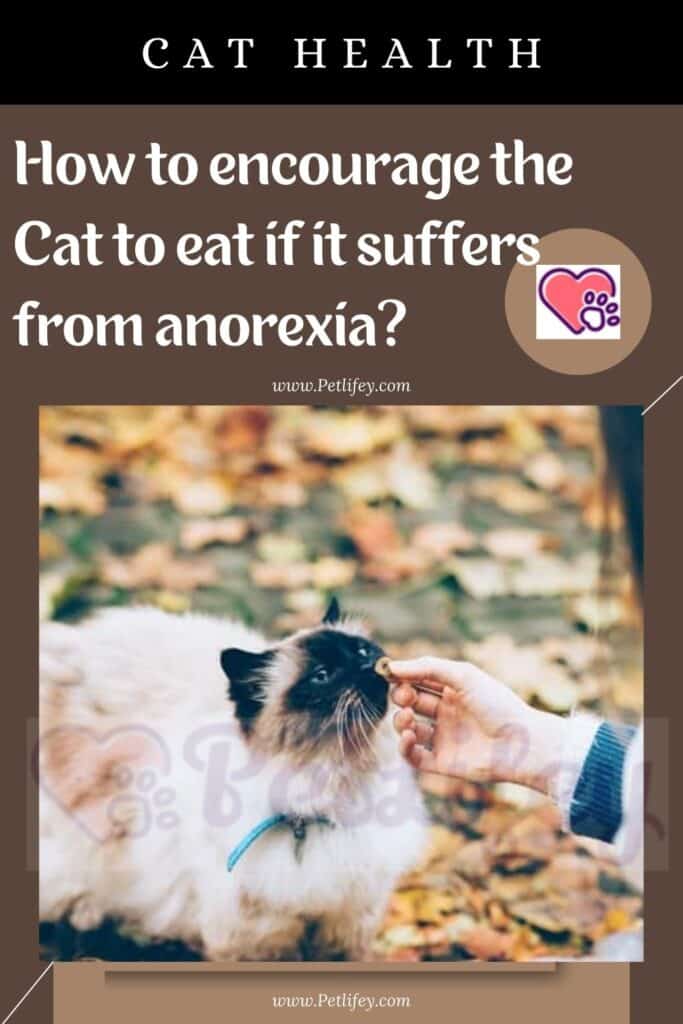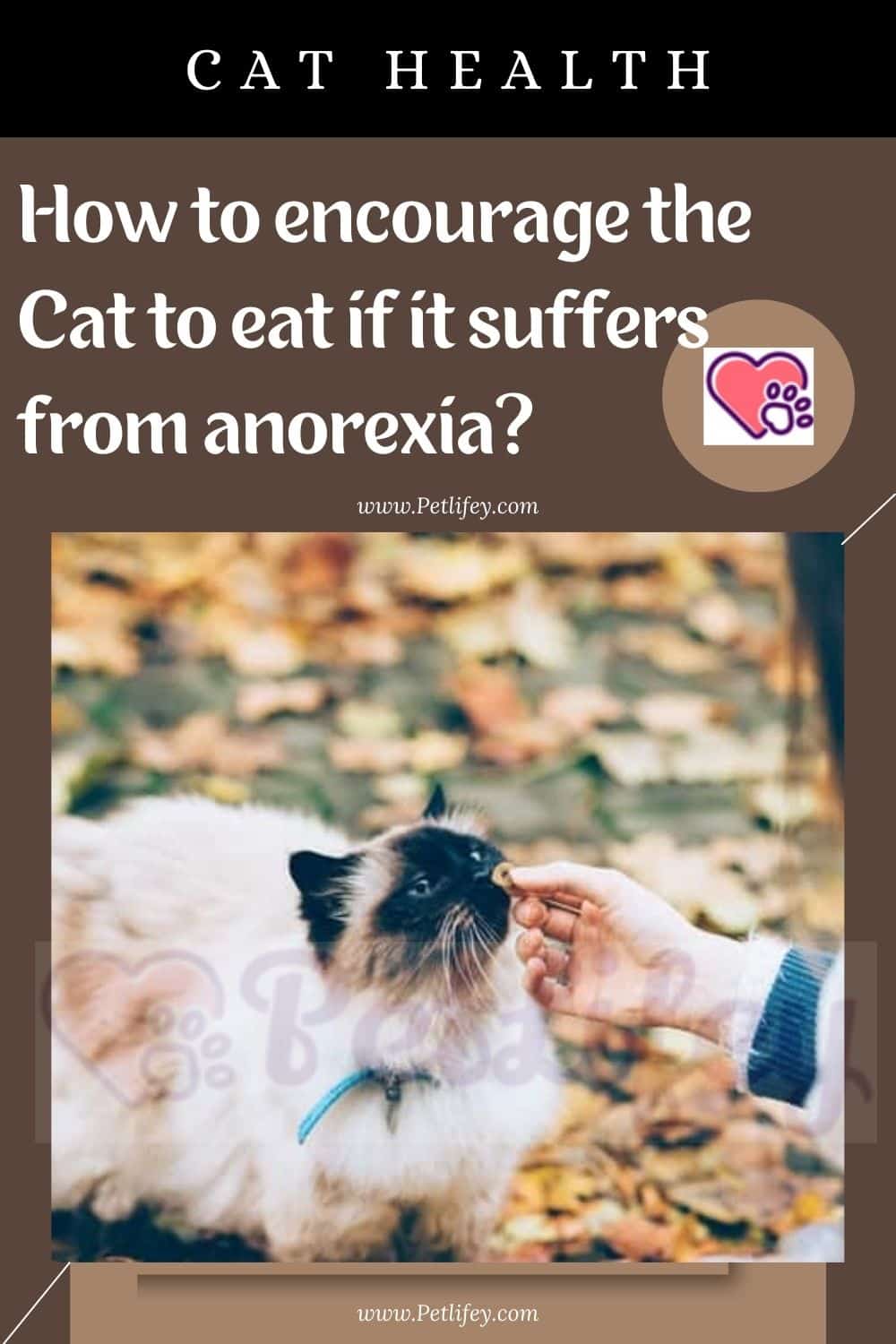How to Encourage the Cat to Eat: Addressing Feline Anorexia Effectively

When your cat shows a lack of interest in food, it may be suffering from anorexia, which is a symptom that can have various underlying causes. Anorexia in cats can be a serious concern that necessitates immediate attention. Identifying the reason behind your cat’s reluctance to eat is crucial, as it could range from stress or environmental changes to dental issues or serious medical conditions like kidney disease or cancer. It’s important to carefully observe any additional symptoms and consult your veterinarian to discuss your cat’s specific situation and diagnosis.
To encourage a cat with anorexia to eat, consider multiple strategies that are both gentle and effective. Ensuring the food is palatable and served at room temperature can make it more appealing. You might also experiment with different types of food, including wet and dry varieties, or even try hand-feeding. In certain cases, your veterinarian may suggest appetite stimulants or recommend a more direct approach like syringe or tube feeding for nutritional support.
Remember, the goal is to provide your cat with the necessary nourishment while uncovering and addressing the root cause of the anorexia. Monitor your cat’s intake and behavior closely, and maintain regular communication with your veterinarian. Prompt attention to changes in eating habits can make a significant difference in your cat’s health and well-being.
Understanding Feline Anorexia
When your cat shows a reduced interest in food, it could be a sign of feline anorexia, a serious condition that requires understanding its causes, symptoms, and implications for effective treatment.
Defining Anorexia in Cats
Anorexia in cats, or true anorexia, is the medical term for a loss of appetite, where your cat may refuse to eat. It differs from inappetence or poor appetite, which implies that your cat is eating, but less than normal.
Causes of Anorexia in Cats
Several diseases can trigger anorexia in cats, including kidney disease, diabetes, cancer, and pancreatitis. Conditions like hyperthyroidism, fever, infections, and hepatic lipidosis may also reduce a cat’s desire to eat.
Recognizing Symptoms and Clinical Signs
Symptoms of feline anorexia often accompany others like lethargy, weight loss, and changes in drinking habits. Monitor your cat’s behavior closely; a prolonged refusal to eat can lead to fatty liver or hepatic lipidosis, which can be fatal.
Differentiating Between True and Pseudo-Anorexia
True anorexia is the outright refusal to eat, while pseudo-anorexia involves the desire to eat but the inability to do so due to factors such as pain while chewing or abnormalities in the mouth.
Exploring Related Conditions
Anorexia can occur secondary to systemic diseases such as dental disease, inflammatory bowel disease (IBD), or asthma that may not directly affect the gastrointestinal tract but still impact appetite.
Psychological Factors Affecting Eating Habits
Stress and behavioral changes can cause a food aversion. Environmental changes or negative experiences associated with feeding may contribute to a lack of appetite in your cat.
The Impact of Pain on Appetite
Pain, whether from periodontal disease or chronic conditions such as arthritis, can significantly diminish your cat’s desire to eat by making the act of feeding uncomfortable or difficult.
The Role of Scent and Temperature in Feline Appetite
Cats rely heavily on their sense of smell to stimulate appetite, and they prefer food at body temperature. A reduced sense of smell or cold food can deter a cat from eating.
Complications of Prolonged Anorexia
Without intervention, prolonged anorexia may lead to serious complications like liver failure due to hepatic lipidosis, a buildup of fat in the liver that impairs its function. This condition can be fatal if not treated promptly.
Vet Intervention and Diagnosis
When your cat shows a lack of interest in food, it is imperative to consult with a veterinarian. Anorexia in cats can be a sign of underlying health issues that require professional diagnosis and treatment.
The Necessity of Veterinary Care
Prompt veterinary attention is crucial for a cat experiencing anorexia. A veterinarian can assess if the loss of appetite is due to pain, sickness, or a more serious condition. Early intervention can facilitate a better prognosis and prevent severe complications like hepatic lipidosis, where fat accumulates in the liver when a cat stops eating.
Diagnostic Approach to Feline Anorexia
The diagnostic process begins with a thorough physical exam which may reveal dental issues, abdominal discomfort, or other problems that could cause anorexia. The veterinarian will also review the cat’s medical history and may ask about recent changes in behavior or environment that could affect appetite.
Common Tests and Imaging
To uncover the underlying causes of anorexia, the following diagnostic tests may be performed:
- Lab Work: including a Complete Blood Count (CBC) and chemistry panel to check for signs of infection, inflammation, or organ dysfunction.
- Imaging: such as X-rays and ultrasound to visualize internal organs and identify abnormalities like tumors or obstructions.
- Endoscopy: a minimally invasive procedure that allows a direct view inside the gastrointestinal tract.
- Biopsies: may be recommended if masses or lesions are found during imaging or endoscopy.
A comprehensive evaluation using these tools helps the veterinarian determine the root cause of the cat’s anorexia.
Treatment Options and Veterinary Advice
Following diagnosis, a range of treatment options may be presented:
- Medication: to manage pain, inflammation, or specific conditions.
- Appetite-Stimulating Drugs: such as cyproheptadine or mirtazapine to encourage eating.
- Nutritional Support: via feeding tube if voluntary eating is not possible.
- Adjustments in Diet: to address dietary intolerances or preferences.
The veterinarian will provide advice tailored to the cat’s specific needs, ensuring the treatment strategy aligns with the diagnosed condition.
Managing Emergency Cases and Hospitalization
In severe cases of anorexia, where the cat is critically ill or dehydrated, immediate hospitalization might be necessary. Veterinarians will offer emergency care, including IV fluids, implanted feeding tubes for nutrition, and close monitoring. Hospitalization ensures that your cat receives round-the-clock care to stabilize their condition.
Nutritional Support Strategies
Proper nutritional support for a cat with anorexia is critical to restoring its health and maintaining energy balance. The following methods and techniques can help provide the necessary nourishment to your cat under these conditions.
Importance of Proper Nutrition
Proper nutrition is crucial for your cat’s recovery. The body requires a balance of proteins, fats, vitamins, and minerals to function correctly. Without adequate nutrition, your cat’s health can deteriorate rapidly.
Methods of Encouraging Self-Feeding
Encouraging your cat to eat voluntarily is preferred. Offer a variety of foods, including both wet and dry food, to appeal to their preference. Strong aromas can entice your cat to eat, so consider warming the food to increase its smell.
Assist-Feeding Techniques
If self-feeding fails, assist-feeding like syringe feeding or tube feeding may be necessary. These methods are more direct and ensure that your cat receives the necessary nutrients.
- Syringe Feeding: Gently administer liquid nutrition into your cat’s mouth using a syringe.
- Tube Feeding: In more severe cases, a feeding tube may be implanted by your veterinarian to deliver food directly to the stomach.
Choosing the Right Food for Anorexic Cats
Cats with anorexia might become picky eaters. Select high-quality, energy-dense foods that are palatable to encourage eating. Your vet may recommend specific diets designed for recovery.
Monitoring Food Intake and Weight
It’s important to monitor food intake and weight regularly to ensure your cat is getting enough nutrition. Keep a feeding log and use a scale to keep track of weight changes.
Implementing Appetite Stimulants
If your cat remains reluctant to eat, your veterinarian might prescribe appetite stimulants like cyproheptadine or mirtazapine. These medications can help increase your cat’s desire to eat.
Transitioning to Normal Feeding
As your cat’s appetite improves, slowly transition back to a more normal feeding routine. Gradually decrease assist-feeding methods while encouraging self-feeding.
Long-Term Feeding Solutions
For chronic cases, longer-term solutions such as an implanted feeding tube may be recommended. This can provide continuous nutritional support until your cat is able to eat independently again.
Home Care and Owner Involvement
As a cat owner, your involvement is critical in managing your cat’s anorexia at home. Creating a conducive environment for feeding, monitoring intake, and providing emotional support are pivotal for your cat’s recovery.
Establishing a Comfortable Feeding Environment
Your cat should have a quiet and safe place to eat, away from high-traffic areas. Ensure the feeding area is clean and the food bowls are free from any strong detergents that may deter your cat from eating.
Owner’s Role in Monitoring and Syringe Feeding
Closely monitor your cat’s food intake and weight. If your cat refuses to eat voluntarily, you may need to resort to syringe feeding as a temporary measure. Consult your vet on the proper technique and food consistency for syringe feeding to avoid aspiration pneumonia.
Identifying and Reducing Stress Factors
Observe your cat’s behavior to identify stressors that may affect their willingness to eat. Changes in routine, new pets, or even rearranged furniture might cause stress. Work to eliminate these factors to help your cat feel more secure.
Recognizing When to Seek Veterinary Help
If your cat hasn’t eaten for 24-48 hours, it’s an emergency that requires immediate veterinary attention. Watch for signs like lethargy and vomiting, and don’t hesitate to use appetite stimulants if recommended by your vet.
Providing Emotional Support and Care
Cats often rely on the emotional state of their owners. Provide emotional support by being present and calm during feeding times, especially if you engage in syringe feeding.
The Importance of Routine and Patience
Maintain a consistent feeding routine, as this can be comforting for your cat. Be patient, as recovering from anorexia can be a slow process. Consistency and gentle encouragement without force are key.
Preparing for Possible Relapses
Relapse can be frustrating, but it’s not uncommon. Be prepared to adapt your home care strategies and to consult your vet if your cat’s eating habits deteriorate.
Remember, your active participation and attentiveness to your cat’s needs are essential in overcoming feeding challenges.
Prevention and Management of Feline Anorexia
Recognizing and addressing feline anorexia promptly can be pivotal to your cat’s health. This section will guide you through various prevention and management strategies to maintain your cat’s appetite and well-being.
Routine Health Checks and Preventive Care
Keep up with routine health checks and preventive care. Regular physical examinations by a veterinarian can help identify and address the early signs of illness that might lead to anorexia. Ensure your cat is up to date with vaccinations and receives periodic health screenings.
Weight Management and Diet
Maintain your cat’s weight through a balanced diet rich in nutrition. Overweight cats and those on a poor diet are more prone to health issues. Monitor your cat’s weight regularly and consult your vet to tailor a diet that supports optimal health.
Understanding and Addressing Behavioral Factors
Be aware of your cat’s environment and routine, as behavioral factors can impact its desire to eat. Stress, anxiety, or changes in the home can lead to reduced appetite. Strive to create a stable environment and address any stressors that may affect your cat’s behavior.
Importance of Early Detection and Intervention
Quick response to changes in your cat’s appetite can be critical. The longer anorexia persists, the higher the risk of severe health issues. Recognize early signs and symptoms of anorexia and seek early detection and intervention from your veterinarian.
Community Support and Resources
Utilize community support and resources for additional assistance. Many communities have groups and experts who can offer advice and experience for managing feline anorexia. Online forums, local pet groups, and veterinary hospitals are valuable resources for support.
Creating an Optimal Feeding Schedule
Design a consistent feeding schedule to encourage regular eating habits. Cats often thrive on routine, so feeding at the same times each day can help manage their appetite. Consider the number of daily feedings and portion sizes that align with your cat’s caloric needs and preferences.







